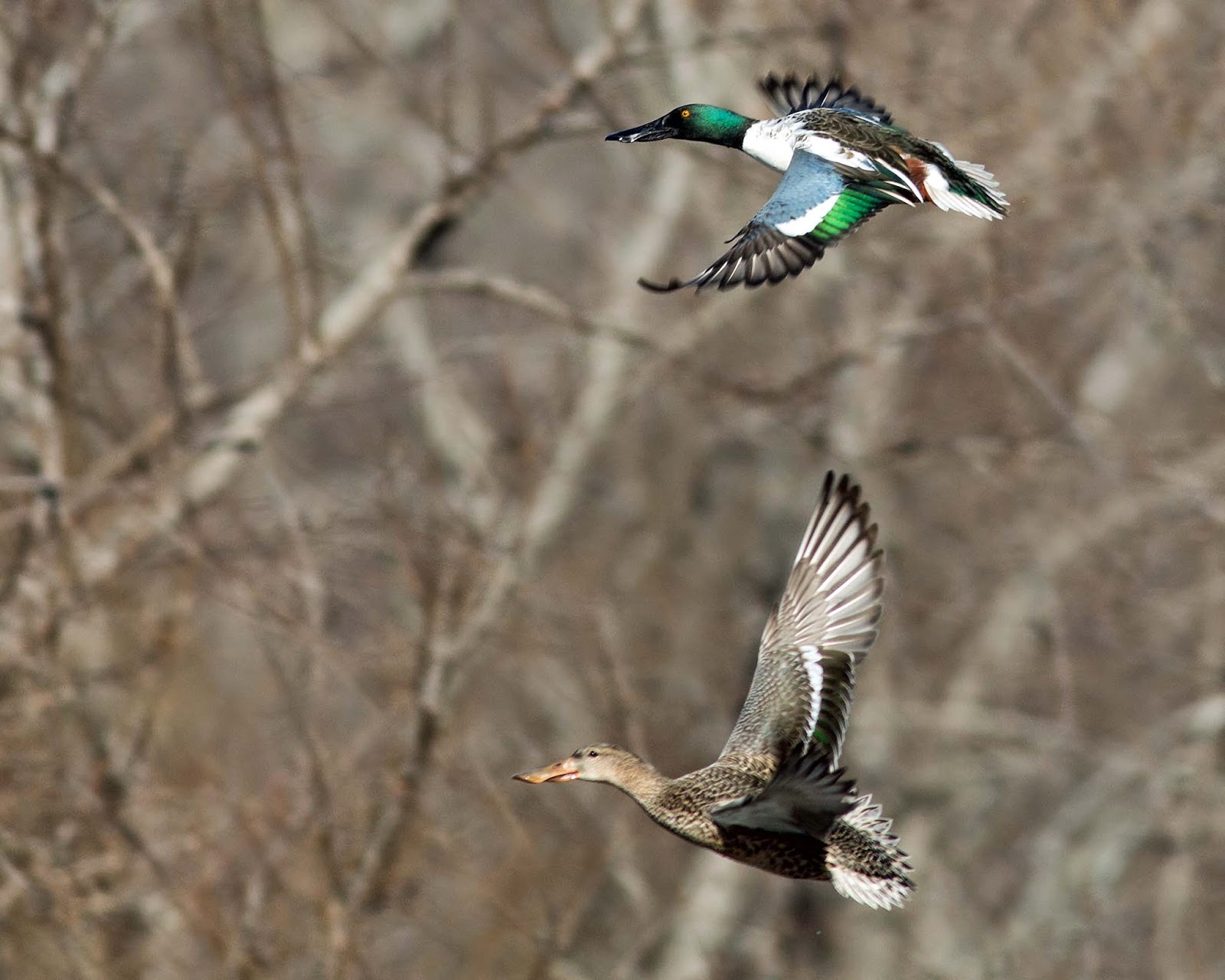
My friend and I headed down to Lake Mattamuskeet early this morning to see what was coming in. With weather today being the best out of the next several, we wanted to take advantage of it.

The first overhead flock came by so fast that you only had time to take a quick shot for later identification. It was a nice surprise to find it was a large flock of Redheads. Over the last couple of years I have only seen a few there so to see these.....
and later these, we were thrilled!
The second overhead flock (not a good shot)
was at a greater distance and I knew by their body shape they were Northern Pintails. As more come in all the ducks will get less and less flighty and they will begin getting closer.

The lake was alive with sound. I love hearing the Tundra Swan. There were singles.....

and there were family units. The three young swans still grayish in color are under the watchful eyes of their parents.
We counted a group of 34 Great Egrets all gathering in a group of pine trees. We got tickled because they reminded us of a bunch of chickens clucking.

A Black-crowned Night Heron was probably the most photographed bird in the refuge today. It was very obliging to pose so nicely. They are so striking with their red eye.

Earlier in the day we saw a rather large flock of white pelicans fly over but they were out of range. Late in the afternoon as we were getting ready to leave, another small flock of seven came closer by. They are such odd but net looking birds.
In the morning we met an individual from Kentucky visiting our State for the week. This was his first visit to the refuge and we enjoyed meeting and talking with him. He gave us each a copy of a book he had recently published. John....we read through some during our lunch break and we thank you. I hope you have a good week and see lots of birds. Enjoy your visit.
 Saturday was more reminiscent of an early spring day versus an early winter's day. Frost was on the boardwalk over the pond early in the morning but quickly burned off as the sun rose higher. By the end of the day temperatures had risen to about 63.
Saturday was more reminiscent of an early spring day versus an early winter's day. Frost was on the boardwalk over the pond early in the morning but quickly burned off as the sun rose higher. By the end of the day temperatures had risen to about 63.
















































